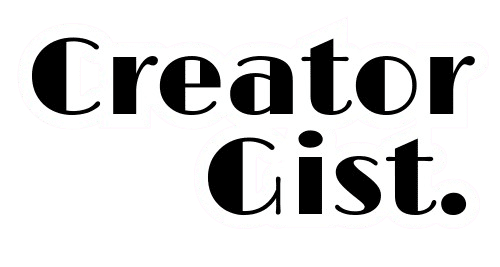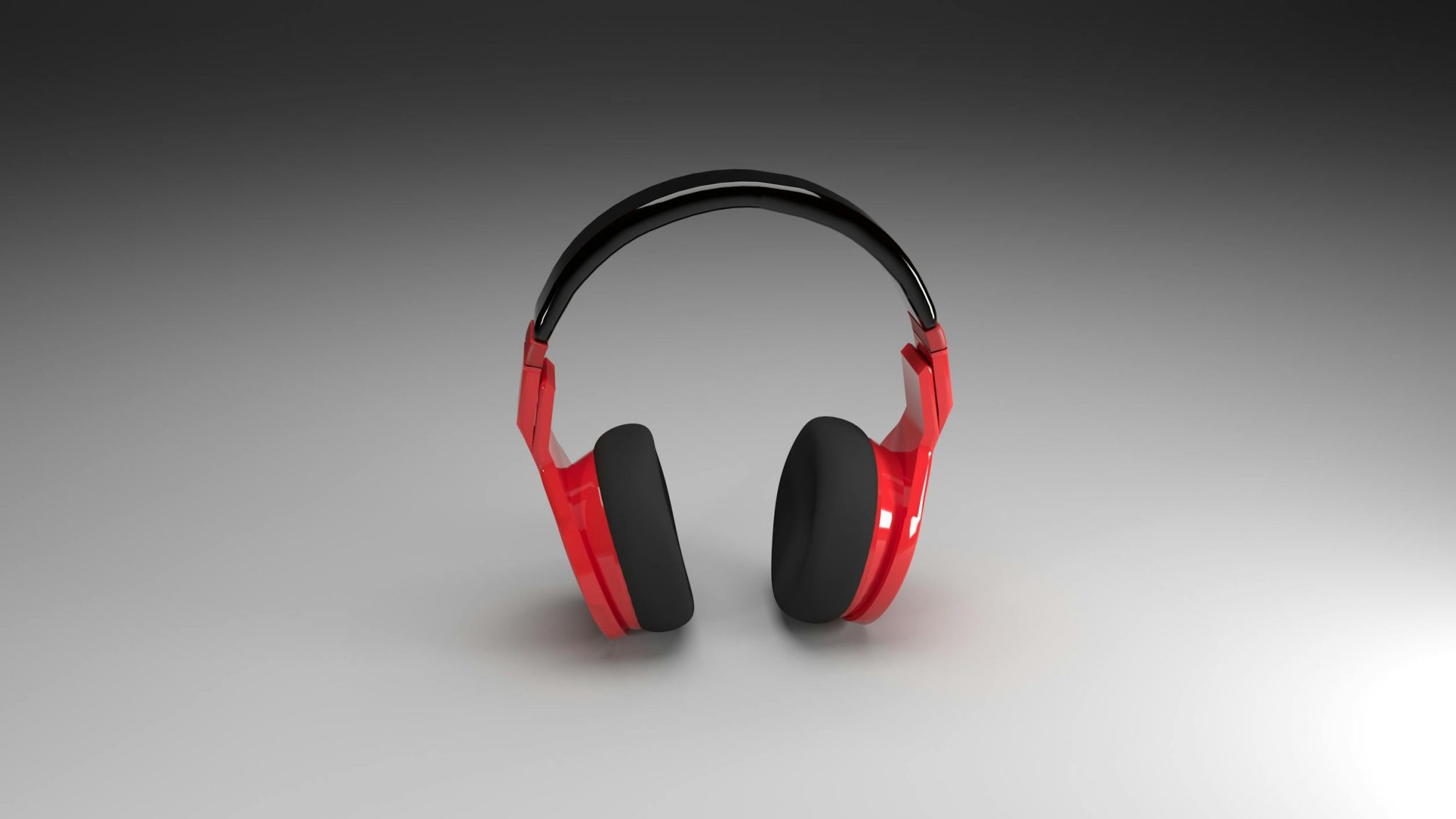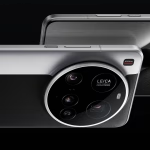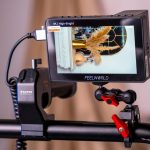Ever found yourself editing a podcast episode at 2 AM, only to discover mouth clicks and background noise that somehow slipped past during recording? Yeah, been there. After ruining countless episodes with subpar headphones, I’ve learned that your headphones can make or break your podcast.
Look, I get it. With every YouTuber and their dog pushing different audio gear, it’s hard to know what’s worth your money. After several years behind the mic, testing over 30 different headphones, and probably spending way more than my accountant would approve of, I’ve got some real talk for you about podcast headphones.
Here’s the thing: you don’t need to drop a month’s rent on headphones to sound professional, but grab the wrong pair, and you might as well be monitoring your audio through a drive-through speaker. Whether you’re just starting or looking to upgrade your setup, I’ve broken down exactly what works, what doesn’t, and what’s worth your hard-earned cash in 2025.
Fair warning: this isn’t your typical “I read the specs on Amazon” review. Every single headphone on this list has survived my personal gauntlet of late-night editing sessions, on-location recordings, and the occasional coffee spill.
Let’s dive into the good, the bad, and the “why didn’t someone tell me this sooner?”
Top 10 Podcasting Headphones
1. Audio-Technica ATH-M50x
Look, I know everyone and their grandmother recommends these, but there’s a reason I’ve stuck with my ATH-M50x headphones for the past three years.
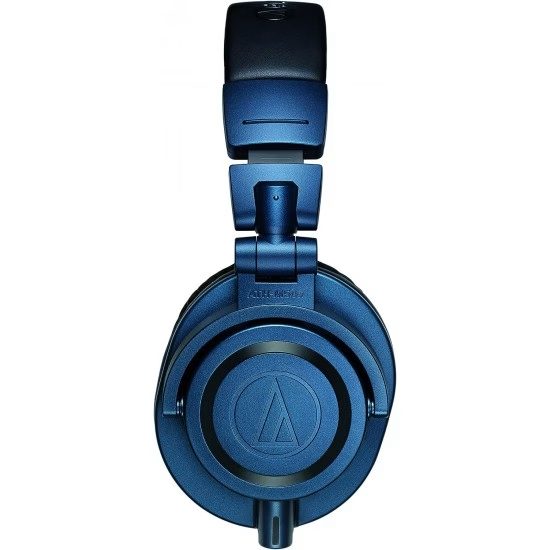
Audio-Technica ATH-M50x
Immersive Studio-Grade Sound: Experience exceptional audio quality with the ATH-M50x headphones, featuring large 45mm drivers that deliver accurate, clear sound.
These bad boys nail the sweet spot between professional quality and not completely destroying your wallet ($169-189 typically).
The closed-back design means you won’t get audio bleeding into your mic – something I learned the hard way during an interview when my guest’s voice kept echoing through my old open-backs.
What I love about them:
- Crystal clear mid-ranges (perfect for vocal monitoring)
- Detachable cable (trust me, this is a lifesaver)
- Durable as heck (mine have survived countless drops)
- Flat frequency response (you hear things as they actually are)
Pro tip: Get the coiled cable option. I used to constantly run over my straight cable with my chair, but the coiled one stays neat.
2. Sony MDR-7506
When my co-host was just starting out, I recommended these ($99-120), and honestly? Sometimes I’m a bit jealous of how good they sound for the price. They’ve been an industry standard forever, and there’s a reason for that.
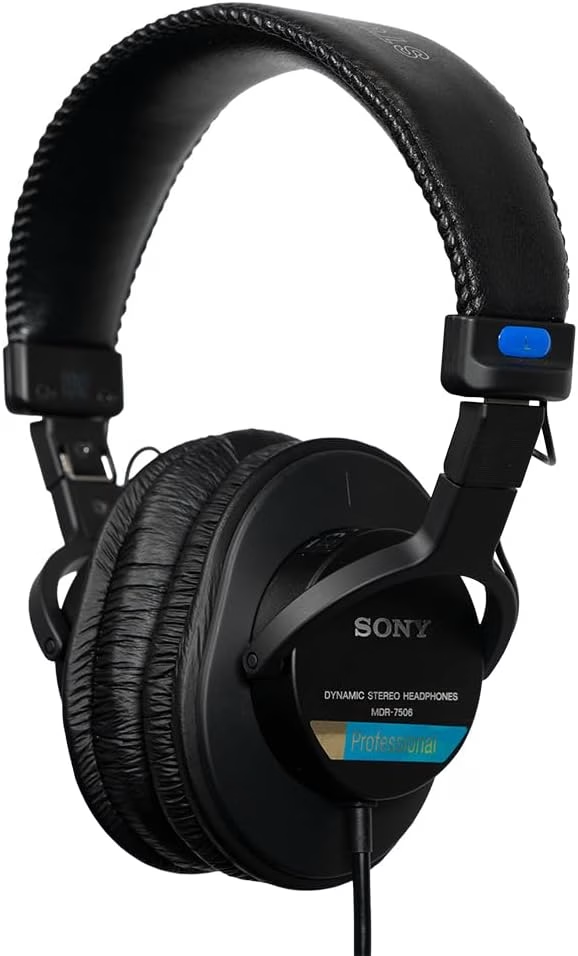
Sony MDR-7506
Sony Over-Ear Studio Headphones: Powerful and Immersive Audio Experience.
Closed-Back Design: Provides excellent noise isolation and prevents sound leakage, ideal for professional audio monitoring.
The sound profile is slightly brighter than the M50x, which helps catch subtle mouth sounds or background noise you might want to edit out.
The only downside? The ear pads tend to flake after about a year of heavy use. But here’s a hack I discovered: grab some velour replacement pads off Amazon. They’re like $24 and make these headphones feel premium AF.
3. Beyerdynamic DT 990 Pro
Y’all, when I finally splurged on these ($179-199), it was like hearing my own voice for the first time. These are open-back headphones, which means they’re not great for recording in noisy environments, but for editing.
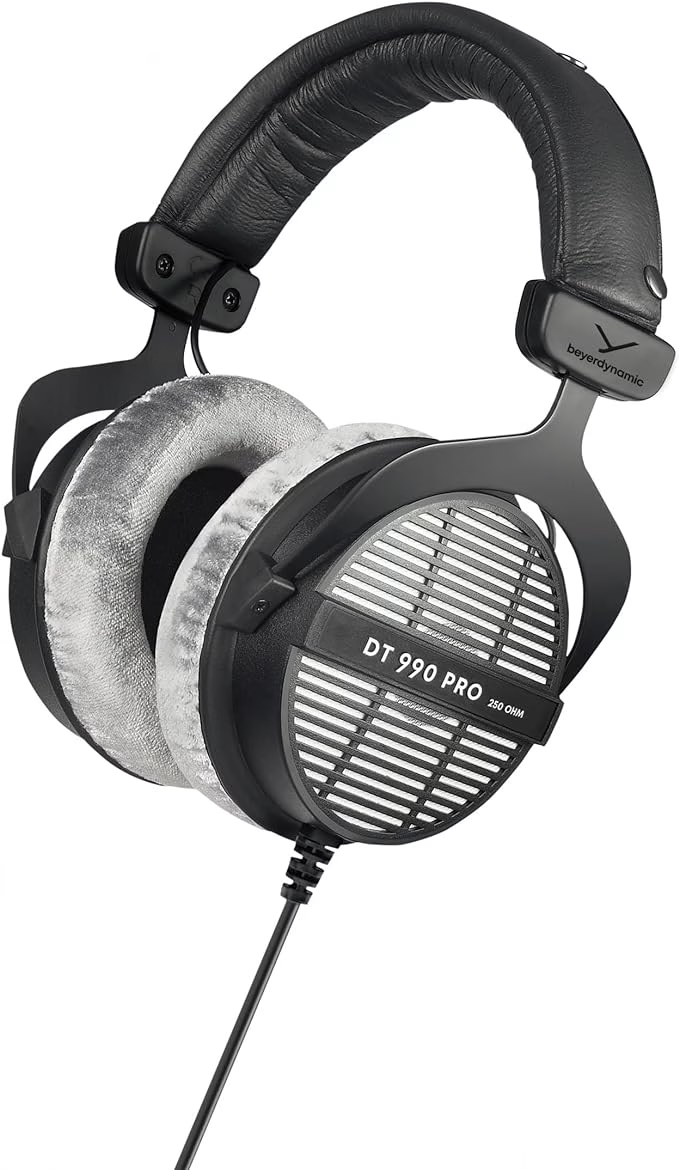
Beyerdynamic DT 990 Pro
Iconic German-Engineered Studio Headphones: The Beyerdynamic DT 990 PRO headphones are renowned for their durable construction and are made in Germany, focusing on professional audio applications.
Transparent and Balanced Sound Signature. Wired Connectivity with Coiled Cable
The soundstage is incredible, and you can wear them for hours without your ears feeling like they’re in a sauna.
Warning though: these can be brutal if you’re sensitive to high frequencies. I had to EQ down the 8-10kHz range a bit in my monitoring setup.
4. Shure SRH440A
Not enough people talk about these ($99-129). I borrowed a pair from a friend when my M50x was being repaired, and color me impressed. The neutral sound signature is perfect for podcasting, and they’re surprisingly comfortable for long recording sessions.
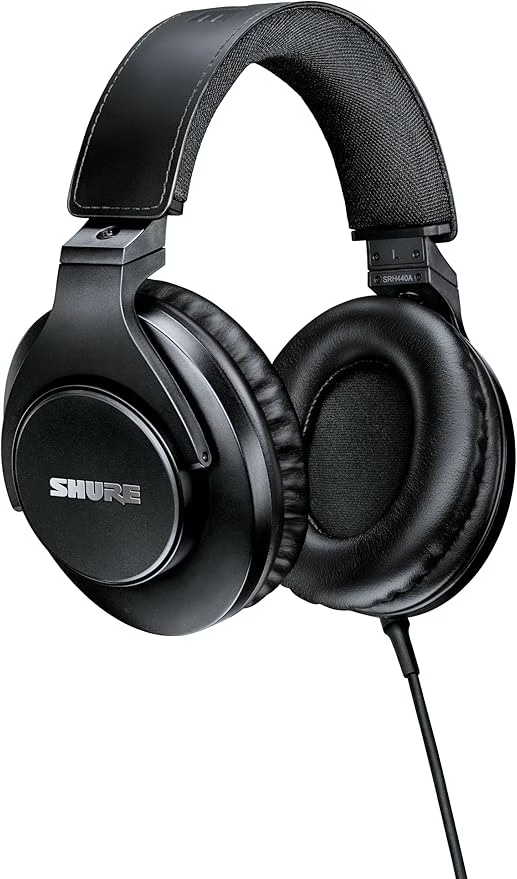
Shure SRH440A
NEW & IMPROVED FEATURES – Developed upon the same foundation as the SRH440, the new SRH440A. Monitoring and Recording Professional Headphones deliver superior audio.
LONG DETACHABLE LOCKING CABLE – 3 m (10 ft.) Detachable straight cable provides plenty of length and easy storage and replacement.
The detachable cable has a locking mechanism that’s actually better than the Audio-Technica‘s.
Quick pro tip I learned after way too many frustrating sessions: always, ALWAYS have a backup pair of decent headphones. Even if it’s just a pair of AKG K240s (which aren’t half bad, honestly), you don’t want technical difficulties derailing your recording schedule.
5. Rode NTH-100
If there’s one thing that surprised me last year, it was these babies ($149-169). Rode knocked it out of the park with their first headphone attempt. I picked these up at a trade show on a whim, and they’ve become my go-to for location recording.
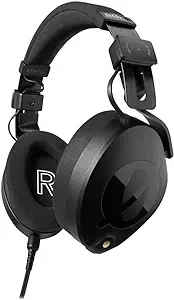
Rode NTH-100
Precision Acoustic Design: These professional over-ear headphones from Rode feature custom-matched drivers optimized for exceptional detail, clarity, and incredibly accurate frequency response, making them ideal for music production, mixing, audio editing, and podcasting.
Unparalleled Comfort backed by trusted quality.
The isolation is incredible – I actually used them to record in a busy coffee shop, and none of the background chatter leaked through.
What sets them apart is the CoolTech™ gel cushions. I know it sounds gimmicky, but my ears stay noticeably cooler during long sessions. Plus, the FitLok sizing system means once you adjust them, they stay perfectly in place.
6. Austrian Audio Hi-X55
Here’s a sleeper hit that doesn’t get enough love in the podcasting community. After developing tension headaches from marathon editing sessions, these were a game-changer. The memory foam earpads and perfect clamp force make them disappear on your head.
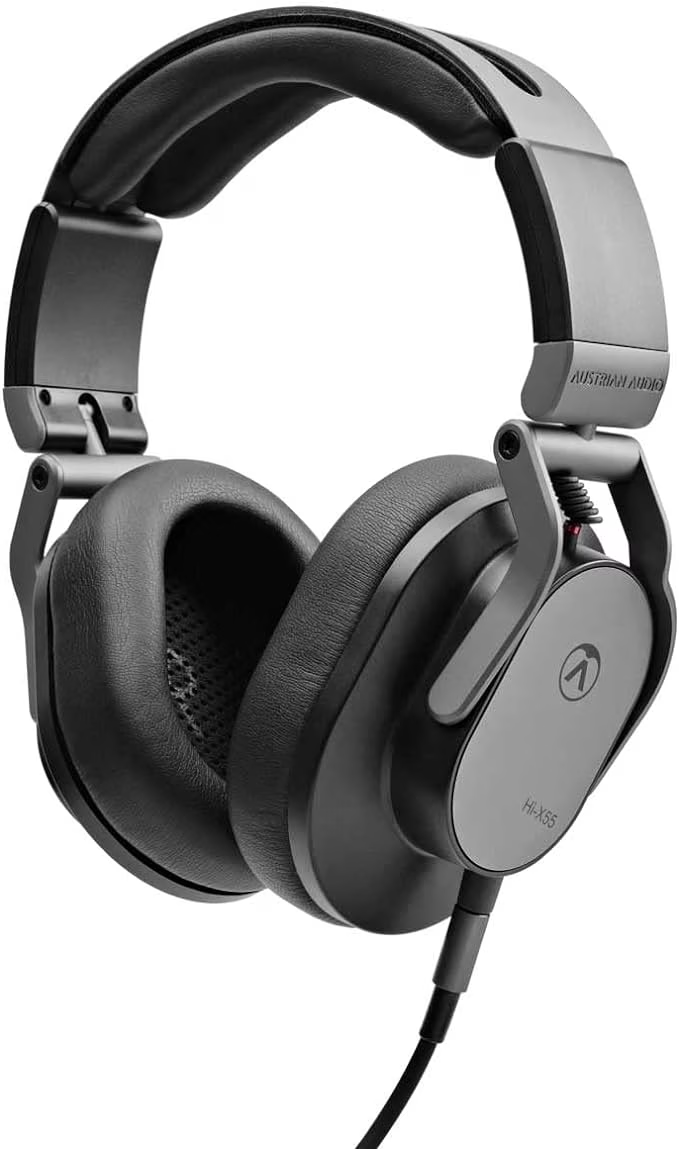
Austrian Audio Hi-X55
On the go or in the studio: The professional Hi-X55 closed-on-ear headphones deliver flawless sound quality and are suitable for everyday use as well as for use in a professional recording studio.
Robust and durable: The hinges and headband of the foldable Studio Headphones are made of all-metal and make the Hi-X55 particularly durable.
I’ve literally edited for six hours straight without that “please get these off my head” feeling.
The detail retrieval is cool too – I’ve caught mouth clicks and background hums that I missed with other headphones.
Just be prepared for some serious monitoring revelations about your audio quality!
7. V-MODA Crossfade M-200
Am not gonna lie, I was skeptical about these because of V-MODA’s reputation in the DJ world. But for mobile podcast recording? Total game-changer. The folding design and hard case make them perfect for throwing in a bag, and they’re built like a tank. I’ve accidentally sat on mine twice (don’t ask), and they’re still going strong.
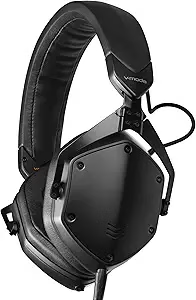
V-Moda Crossfade M-200
Closed-back Headphones with 50mm Neodymium Drivers
10Hz-20kHz Frequency Response
Detachable Cable
Carrying Case
Pro tip: Skip the Bluetooth version – the wired ones have better sound quality and no latency issues to worry about.
8. AKG K371
Listen up, newbie podcasters – these ($179) might be all you ever need. The sound signature is surprisingly close to my $400 reference headphones. They fold up tiny, the bass response is perfect for male voices, and they’re comfortable enough for long sessions.
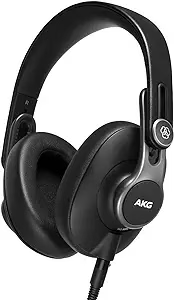
AKG Pro Audio K371
✔️Premium Audio Experience: Engineered with AKG’s reference response curve and equipped with large 50mm titanium-coated transducers.
✔️Brand Assurance: Backed by AKG’s reputation for professional-grade audio equipment, this model comes with a 1-year manufacturer’s warranty on parts and labor.
The only downside is the cable connection can be a bit finicky.
9. Neumann NDH 20
Okay, these are pricey, but if you’re serious about post-production, they’re worth every penny. The level of detail is almost scary – I had to re-record three episodes after getting these because I could suddenly hear all sorts of issues I’d missed before.
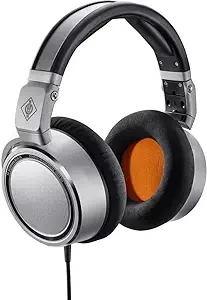
Neumann NDH 20 Closed-Back
✔️Linear sound balance, like Neumann’s acclaimed studio monitors
Excellent isolation allows working in noisy environments, ✔️Transparent sound with high-resolution, High long-term comfort, Easy transportation
✔️150 Ohm headphone – Pre amp or headphone amp recommended
The stereo imaging is incredible for placing effects and transitions in your mix.
Fair warning, though: they will make you hyperaware of any room noise or mic technique issues. It’s both a blessing and a curse!
10. Drop + Sennheiser PC38X
This is my final pick in this list. The secret weapon for remote interviews. It’s technically a gaming headset, but hear me out – the boom mic is surprisingly good for backup audio, and the open-back design helps you hear your own voice naturally during long interview sessions.
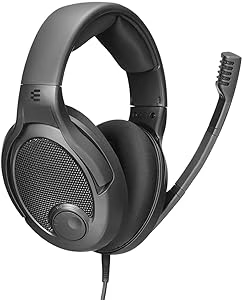
Drop + Sennheiser PC38X
Elevated Gaming Audio: The DROP + EPOS PC38X over-ear headset offers superior sonic performance with angled drivers from the acclaimed GSP 500/600 series.
Wired Connectivity: Connecting via a detachable 3.5mm cable
Plus, having the mic attached to the headphones means one less thing to worry about when you’re traveling.
Final Thoughts
You don’t need to spend a fortune to get great podcast audio. What matters most is understanding what you’re working with. After testing literally dozens of headphones (much to my partner’s amusement), I’ve found that anything from this list will serve you well.
Just remember – headphones are essentials in your podcasting kit but the ones that fit your specific needs and budget are key.
Extra Tips From My Experience:
- Always do a test recording with new headphones
- If you wear glasses, closed-back headphones can get uncomfortable after an hour
- Keep your headphone volume at 70% max – protect those ears, people!
- Clean your ear pads monthly (I use a slightly damp microfiber cloth)
- Consider a headphone amp if your interface’s headphone output is weak
Remember, at the end of the day, content is king. I’ve heard amazing podcasts recorded with basic headphones and terrible ones recorded with top-of-the-line gear. But having reliable, comfortable headphones makes the whole process so much more enjoyable – and helps you catch those little audio issues before they become big problems.
So there you have it, folks – my honest-to-goodness, battle-tested recommendations for the best podcast headphones in 2025. I hope this helps you find the perfect pair to elevate your audio game, whether you’re just starting out or looking to level up your existing setup.
FAQs
Choosing the right headphones for podcasting can significantly impact your content quality. Here are the most frequently asked questions about podcasting headphones, answered with expert insights to help you make the best choice.
1. What makes headphones good for podcasting?
Professional podcasting headphones should have these key features:
- Closed-back design for sound isolation
- Flat frequency response (20Hz-20kHz)
- Over-ear cups for comfort during long sessions
- Detachable cable for easy replacement
- High impedance (250-600 ohms) for cleaner sound
- Durable construction for regular use
- Good sound isolation (at least 25dB)
Professional podcast headphones focus on accurate sound reproduction rather than enhanced bass or treble.
2. How much should I spend on podcasting headphones?
Podcasting headphones typically fall into these price ranges:
- Entry-level ($100-200): Good for beginners, basic monitoring
- Mid-range ($200-400): Professional quality, ideal for most podcasters
- High-end ($400+): Studio-grade, best for professional productions
Investing in mid-range headphones usually provides the best value for serious podcasters, offering professional features without excessive costs.
3. Should I choose wireless or wired headphones for podcasting?
Wired headphones are recommended for podcasting because they offer:
- Zero latency monitoring
- No battery concerns during recording
- Better sound quality
- More reliable connection
- No interference issues
- Lower cost for similar quality
- No potential Bluetooth sync problems
While wireless technology has improved, wired connections remain the industry standard for professional audio work.
4. What’s the difference between open-back and closed-back headphones for podcasting?
The key differences are:
Closed-back headphones (Recommended for podcasting):
- Better sound isolation
- No audio leakage into microphones
- Ideal for recording
- Better bass response
- Suitable for noisy environments
Open-back headphones:
- More natural sound
- Better soundstage
- Less ear fatigue
- Better for mixing
- Not suitable for recording
5. Do I need different headphones for recording versus editing podcasts?
While you can use the same headphones, each task has different requirements:
Recording needs:
- Strong sound isolation
- Minimal sound leakage
- Comfortable fit
- Accurate monitoring
Editing preferences:
- Detailed sound reproduction
- Wide frequency response
- Comfort for long sessions
- Potentially open-back design
Most professional podcasters use closed-back headphones for both tasks for consistency.
6. What headphone impedance is best for podcasting?
Optimal impedance ranges for podcasting headphones:
- Low impedance (16-32 ohms): Works with mobile devices
- Medium impedance (32-100 ohms): Good for most interfaces
- High impedance (100-600 ohms): Best sound quality, requires amplification
Recommended impedance: 80-250 ohms for optimal balance between quality and compatibility with most audio interfaces.
7. How do I prevent audio bleed when recording with headphones?
To minimize audio bleed:
- Use closed-back headphones
- Keep monitoring volume at moderate levels
- Ensure proper headphone fit
- Check seal around ear cups
- Replace worn ear pads
- Position microphone correctly
- Use headphones with at least 25dB isolation
Proper technique and equipment can virtually eliminate audio bleed during recording.
8. How long do podcasting headphones typically last?
Lifespan depends on several factors:
- Build quality: 3-7 years for professional models
- Usage frequency: 2-5 years for regular use
- Maintenance: Can extend life by 1-2 years
- Cable care: Replace cables every 1-2 years
- Ear pad replacement: Every 6-12 months
- Storage conditions: Proper storage extends life
Professional headphones with replaceable parts can last 5+ years with proper maintenance.
9. What headphone features are most important for remote podcast interviews?
Essential features for remote interviews:
- Strong noise isolation
- Clear mid-range frequency response
- Comfortable fit for long sessions
- Durable construction
- Good microphone isolation
- Reliable cable connection
- Compatible with various devices
These features ensure clear communication and consistent audio quality during remote recordings.
10. Should I use the same headphones as my podcast guests?
Considerations for guest headphones:
Pros of matching headphones:
- Consistent monitoring experience
- Predictable sound quality
- Easier troubleshooting
Cons of matching headphones:
- Higher cost
- May not suit all guests
- Different head sizes/shapes
- Various comfort preferences
Recommendation: Use professional headphones for yourself and keep 1-2 good quality, comfortable pairs for guests.
Let me know what you think in the comments – I’m always eager to hear your personal experiences and headphone hot takes.
